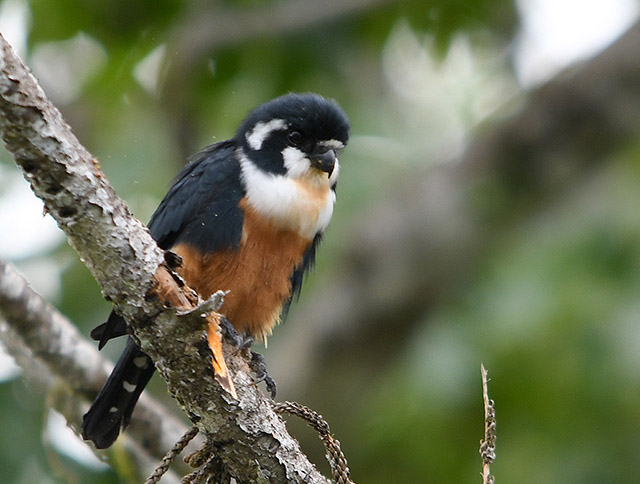It
is common knowledge that our forests are under threat but the devastation does
not end there. Wetland habitats suffer a similar fate. In my home state of
Penang, I am running out of wetlands to visit. And for someone with a soft
spot for water birds, it is utterly depressing. The marshlands at Batu Kawan would have been my saviour if it has not been slated for
development in the near future. At the break dawn, my companions and I plodded along
the soft laterite access road cutting through a construction site. It may not sound
much like a birding trip but that is what one has to endure in order to reach
the said wetlands. Sad but true...
I
may not speak for everyone but the sight of a congregation of large water birds
never ceases to amaze. Flock by flock of water birds arrive at this
feeding ground from their roosts in the surrounding vicinity. For the record, this location
probably has the highest density of Purple Herons and Grey Herons in Penang and the numbers
are incredible. I opted to observe rather than photograph because that is where
the true value lies and this image of a lone Grey Heron may not be able to fully
convey the moment.
The
advancement in digital cameras of late is undeniable but they do not come
cheap. So, for the time being I still rely on pressing the shutter and pray for
at least one frame to turn out decent. However, there is a limit to how much
one can achieve through prayers especially for a flight shot in dim lighting
like this taunting Cinnamon Bittern making its way to breakfast.
One
has to be observant to pick out the small but adorable Long-toed Stint from all
the blobs of mud, debris and vegetation present in the wetlands. The
distance may have robbed me of some of the joy but the Long-toed Stints have
their way to gain my affections.
A
trio of drabber looking stints dashed across our field of view haphazardly and
alighted on a distant sandbank. Our initial guess was spot on when they
turned out to be Temminck’s Stints in the end. This species is an uncommon winter
visitor to our land and more than capable to excite even the most seasoned
birder.
My
encounter with the rare Common Ringed Plover here last season left much to be desired.
Naturally, all Little Ringed Plovers were scrutinized for a possible re-occurrence
of the former but I could not attain the closure I seek.
The
Black-winged Stilts graced the location in good numbers with their elegant
presence. The new generation of birders and bird photographers may not be aware
that this bird was once a rarity in Malaysia but I certainly do. Decades may
have passed. Exhilaration may have been reduced. One of my all-time favourites, the bird remains.
They are conspicuous not only because of their contrasting colouration but vocal
nature as well. More often than not, they drown out most other species that
share their watery domain. This temporary sanctuary will host the Black-winged Stilts and the rest
for at least one more season. I am no soothsayer but unless a miracle takes
place, the demise of this locality is just a matter of time.
It
is safe to say it is no longer unusual to record Little Cormorants in the northern half of the peninsular. A big flock resting together after a morning’s hunt is an impressive
sight. One that I am still trying to get used to.
Garganeys,
on the other hand, are unusual with sporadic winter records
throughout the years. And to have four individuals together at a single spot close to home should
be my early Christmas judging on how slow things have been for this year.
Apparently,
the Lesser Whistling Ducks have had enough of the overwhelming stench and toxic at the
marshland next to the Pulau Burung landfill and are now taking refuge here. I
wish there was a way I could warn them not to get too comfortable because
the good life they are now enjoying is not going to last.
There
is a good reason behind the name of the Greater Painted-Snipe. The female bird
(yes, female bird) is vibrantly coloured and stunning. There is also a reason
why she seldom reveals her true beauty for evolution has made her particularly elusive.
Wetland
habitats are not without their dangers. Raptors are always on the lookout for
prey and today, a male Eastern Marsh Harrier was on the hunt. Harriers are
generally uncommon at this location but this individual seemed to have decided
on his wintering ground this season. His malicious presence will not be
welcomed by other wildlife but it certainly added value to our excursion.
Executing
a mid-flight scratch to get rid of an annoying itch…
The
Zebra Dove is about bite-size for the Eastern Marsh Harrier and its tendency to
perch in the open can be hazardous to its health.
The
Long-tailed Shrike is predatory as well but on a smaller scale. This is one of
the few places in Penang where this beautiful species resides and has been
recorded regularly.
It
is normally a shy bird despite occurring in scrub and open country habitats. Today, a pair was being more confiding than usual perhaps due to the
approaching breeding season. Whatever the reason may be, I do not come across
the Long-tailed Shrike often enough not be thrilled by their performance.
There
was a significant change to the taxonomy of birds recently. More
splits and renaming – as usual. Inevitably, I try my best to keep myself
updated for Malaysian species. Among the changes, the Intermediate Egret is now called the Medium
Egret which I cannot help but to chuckle when I first found out. I do not know how to put it but it just sounds odd. Will the Little Egret and Great Egret be renamed as to go with the flow? Anyway here is the bird, with no regards that it is now probably the most joked-about bird wherever it occurs, looking all so poised at our second location of the day which is the Permatang Pauh paddy fields.
Searching
for a little brown job in dense vegetation is not every one’s cup of tea. I
will usually give it a pass but my companions convinced me otherwise. A lot of
thought and strategy was put into the approach this time and we managed to
persuade two Manchurian Reed-warblers to settle into a small clump of reeds. In
fact, the smallest clump in the vicinity and just next to the access road. I could
almost taste success when these globally vulnerable migrants put the human observers in their place and reminded them just how difficult reed-warblers
can be if they choose to be.
When
the vegetation finally gave way to a less obstructed view, it was the lighting’s turn
to dampened our photographic efforts. Murphy's Law at work again.
However, birders can be exceedingly stubborn and determine especially with failure looming. An unexpected turn of luck eventually had the Manchurian Reed-warbler alighting on a relatively open perch with decent lighting. If this is not proof of the existence of a higher being, I do not know what is. As we were enjoying our moment of triumph, the reed-loving warblers gradually made their way out of sight but not out of memory. A fitting end to a rewarding outing and I am relieve there is no negative conclusion to this posting for a change. Perhaps, it is the magic of Christmas at work.
Speaking of which, MERRY CHRISTMAS & HAPPY NEW YEAR to everyone!









































.jpg)
.jpg)















.jpg)
.jpg)
.jpg)
.jpg)







.jpg)
.jpg)
.jpg)

.jpg)